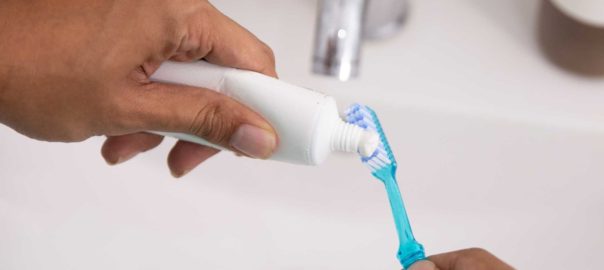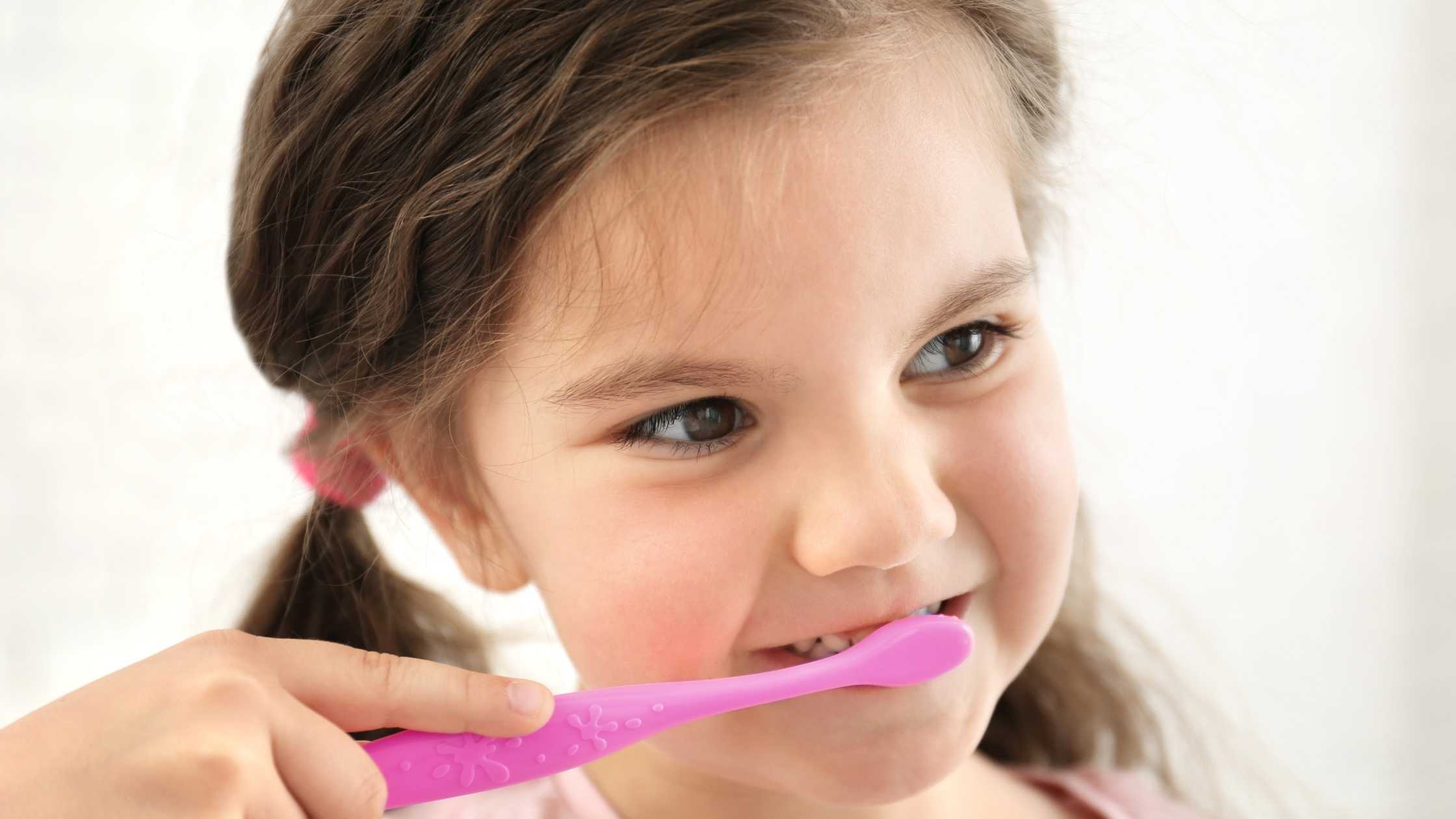Fluoride is touted as this wonderful element that is great for our teeth, but have you ever wondered about the history of this halogen? In the early 1900’s a young dentist, Dr. McKay, began his practice in Colorado. He noticed that most the children had brown stains on their teeth. Through the years he and other dentists studied this condition. Dr. McKay spent 30 years working on this. Other areas in the US began to have this challenge also which included Idaho and Kentucky.
As with much discovery in science, as technology advances so does the ability of the scientist to discover more information. By 1931 photospectrographic analysis revealed that the water in these areas contained high levels of fluoride which had affected the teeth of the children. The condition has since been named fluorosis. It can change tooth enamel which can be slight spots, to brown staining, to pitting and all are permanent. It is most prevalent in children. One of the dentists that was studying this condition also found that these children had low rates of cavities.
Testing then began to be done on water to compare various levels. It was determined that fluoride levels up to 1.0 ppm in drinking water did not cause enamel fluorosis in most people. This is how fluoride began to be used to treat cavities.
Adding Fluoride to the Water Supply
With this newfound information, the head of the Dental Hygiene Unit at the NIH set out to determine how fluoride could be added to the water supply in “safe” amounts. What needs to be noted is that fluoride found naturally is in the calcium fluoride form. In dental products such as toothpaste and mouthwash, a pharmaceutical grade of fluoride is used, sodium-fluoride.
What is used to add fluoridation to our water supply is actually an untreated industrial waste product from the fertilizer industry. This can contain trace elements of arsenic and lead. This is a less expensive form to use but is it safe and effective to be added to our water supplies?
In 2011, the amount of fluoride to be added to water was reduced to 0.7 ppm because fluorosis has continued to be found in children. Now you may be thinking 0.7 ppm is such a small amount how can it affect my teeth? Well, it isn’t just from water and dental products that you may be ingesting fluoride.
Other Sources of Fluoride
Fluoride isn’t only added to our water and used in dental care products. It can be found in a number of foods we eat. Plus any item made with water may be a source of fluoride if the water source has not been filtered to remove it. The following items may also be a source of fluoride:
- tea
- coffee
- grapes (this also means grape juice, raisins, and wine)
- shellfish
- sodas
- popsicles
- baby foods
- broths, and stews
Another Source of Fluoride Can be Bottled Water!
Yes, your bottled water can contain fluoride. It's important to note that if you drink a lot of bottled water not only are you being exposed to BPA (from the plastic), chances are high that you are also consuming fluoride. That's because many bottled water companies actually pull their water from municipal sources which are heavily treated with fluoride.
Here is a source of bottled waters that contain fluoride.
The Cavity Connection
Does fluoride really help with cavity prevention? It is interesting to note that most countries do not fluoridate their water. The United States, Australia, Ireland, Singapore, and Brazil are some that do. Western Europe has rejected the process, yet the rate of tooth decay has declined there at the same rate as the US.
The other interesting statistic is that the rate of dental fluorosis has increased markedly in the past quarter century. Plus fluorosis is not the only concern when it comes to ingesting fluoride.
Fluoride may also become concentrated in the bones, altering the tissue structure, and weakening the skeleton. Fluoride ingestion can cause decreased activity of the free calcium, which is concentrated throughout the body in the teeth, bones, ligaments, aorta, skeletal muscles, and the brain. It has also been found to cross the blood-brain barrier. In fact, long-term fluoride exposure appears to decrease IQ in children.
Thyroid Health
Another area of concern is with the thyroid. A study published in Environment International suggests that there is emerging evidence that shows fluoride is an endocrine disrupter with the potential to disrupt the thyroid. This occurs because fluoride is a negative ion and easily displaces iodine in the body.
Fluoride inhibits iodine uptake, transport, and reabsorption. This is especially important when there is greater susceptibility, especially in infancy and childhood which can influence health outcomes into adulthood.
Iodine deficiency during pregnancy can have serious implications on the health of the baby including the risk of miscarriage, stillbirth, reduced IQ, and greater risk of ADHD and ASD. In adults, the loss of iodine bioavailability can lead to lower antioxidant capacity, reduced anti-inflammatory capacity, impaired immunity, and increased risk of cancer. All this emerging evidence that fluoride intake is associated with negative health outcomes suggests that continuing the policy of fluoridation of drinking water maybe contributing to the pathogenesis of neurodevelopment disorders, impaired immune responses, inflammatory diseases, and cancer.
Reducing Your Fluoride Exposure
With all these serious health conditions, it is important to be proactive in eliminating or at least limiting your fluoride exposure.
There are steps you can take to begin this process. The first step is probably the most important one – stop using fluoride-added products. To avoid fluoride, it is important to choose fluoride-free toothpaste and dental health products.
It is also recommended to filter all water that you cook with, drink, and bathe in. There are a number of filters that can remove fluoride from your water. These include whole house filters, which can be admittedly expensive or reverse osmosis under-sink filters, or specialty filters such as a Big Berkey with a fluoride filter. Because water is not the same in every community it's a good idea to choose a filter that's the correct one for your geo-individual location.
Watch this interview with Lara Adler in order to learn more about healthy water or purchase her e-course PURE: Finding The Best Filter, For The Purest Water
It’s also important to avoid using Teflon coated cookware as fluoride can leach from these pans into the food.
The next step is exercise. Exercise helps with overall detoxification especially with sweating. Options can include free-weight training, yoga, brisk walking, and etc. The best exercises are the ones you enjoy and can consistently do while working up a sweat.
As you know I am a big proponent of a healthy, whole food diet and this is also important for mitigating the effects of fluoride. Sticking to whole foods is important as they generally contain less fluoride because processed foods can be prepared with water containing fluoride. If you can choose organic all the better as there will be less pesticides and insecticides that may contain fluoride products. A key to fluoride detoxification is to maintain an alkaline state in your body. It can be helpful to limit acidic foods from your diet.
Real Food Support for Fluoride
There are specific nutrients that can be helpful in decreasing the effects of fluoride in the body. Let’s take a look at a few now:
- Calcium is one of the biggest known substances in fighting fluoride. It can sometimes be recommended as one of the treatments of a fluoride overdose from household products such as hydrofluoric acid in rust remover. Food sources include seeds, cheese, yogurt, almonds, leafy greens, sardines, salmon, and any other fish where the bones are edible. Note: if you suspect a fluoride overdose call the Poison Control hotline right away for information and support - 1-800-222-1222
- Vitamin D helps with the absorption of calcium. Food sources include wild salmon, herring, sardines, and grass fed/pasture-raised animal products.
- Vitamin C is helpful to heal damage caused by fluoride. Food sources include peppers, parsley, kale, kiwis, broccoli, lemons, strawberries, and citrus fruits.
- Selenium acts as a free-radical scavenger. This can provide a beneficial effect against fluoride toxicity by maintaining normal antioxidant status plus selenium can directly bind to fluoride. This decreases the high concentrations of fluoride, promotes urinary excretion of fluoride, and provides clinical recovery. Selenium-rich foods include brazil nuts, tuna steak, shrimp, sardines, salmon, cod, cremini mushrooms, shitake mushrooms, and asparagus.
With the rates of dental fluorosis increasing since 1980, we need to take a good look at how much fluoride we are consuming. A very large international study has indicated that cavity incidence is lowest in cities with the lowest levels of water fluoride and with a calcium sufficient diet. This supports maintaining a diet rich in whole foods as they will be rich in antioxidants and nutrients to battle against the fluoride.
Sources
- Is Fluoridated Drinking Water Safe? Harvard Public Health Magazine. Retrieved from https://www.hsph.harvard.edu/magazine/magazine_article/fluoridated-drinking-water/
- Flora, Swaran. (2015). Preventing Fluoride Toxicity with Selenium. Research Gate. Retrieved from https://www.researchgate.net/publication/289520631_Preventing_Fluoride_Toxicity_with_Selenium
- Reddy KP, Sailaja G, Krishnaiah C. Protective effects of selenium on fluoride induced alterations in certain enzymes in brain of mice. J Environ Biol. 2009 Sep;30(5 Suppl):859-64. PMID: 20143719.
- Sauerheber R. Physiologic conditions affect toxicity of ingested industrial fluoride [published correction appears in J Environ Public Health. 2017;2017:4239182]. J Environ Public Health. 2013;2013:439490. doi:10.1155/2013/439490
- Singh N, Verma KG, Verma P, Sidhu GK, Sachdeva S. A comparative study of fluoride ingestion levels, serum thyroid hormone & TSH level derangements, dental fluorosis status among school children from endemic and non-endemic fluorosis areas. Springerplus. 2014;3:7. Published 2014 Jan 3. doi:10.1186/2193-1801-3-7
- Wang, M., and others. (January 2020). Thyroid function, intelligence, and low-moderate fluoride exposure among Chinese school-age children. Environmental International. Science Direct. Retrieved from https://www.sciencedirect.com/science/article/pii/S0160412019301370
- Waugh DT. Fluoride Exposure Induces Inhibition of Sodium/Iodide Symporter (NIS) Contributing to Impaired Iodine Absorption and Iodine Deficiency: Molecular Mechanisms of Inhibition and Implications for Public Health. Int J Environ Res Public Health. 2019;16(6):1086. Published 2019 Mar 26. doi:10.3390/ijerph16061086
- Zelko, F. Toxic Treatment: Fluoride’s Transformation from Industrial Waste to Public Health Miracle. Retrieved from https://origins.osu.edu/article/toxic-treatment-fluorides-transformation-industrial-waste-public-health-miracle





